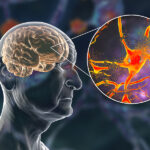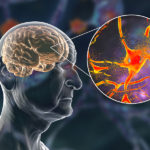By David Blyweiss, M.D., Advanced Natural Wellness
December 2, 2019
As a man over the typical age of retirement, I feel really lucky to still have my brain. It’s clicking along at full speed.
This sharpness of mind allows me to continue my work – traveling to conferences across the world. I’m helping to teach the next generation of doctors.
“Retirement” isn’t part of my vocabulary…
But 5 million people in the US suffering from Alzheimer’s aren’t so lucky. And when you look at the whole planet, numbers are expected to rise to 63 million people with dementia by the year 2030.
If you’ve ever had to watch a loved one deal with a type of dementia, you know how scary it can be.
It’s heartbreaking to watch…
You see someone you’ve talked and laughed with for years slowly lose touch with the world around them.
All the while, you wonder what could possibly have allowed the disease to take hold in their brain.
Well, the causes are not well defined…
Open your arteries, improve blood flow for a new health miracle...
Did you know your circulatory system has over 60,000 miles of arteries, veins and other blood vessels, if stretched end to end?
But as you age, your blood vessels undergo changes, which may cause them to stiffen, thicken and get clogged.
GOOD NEWS! Doctors have now identified a “Miracle Molecule” inside your arteries that helps OPEN your arteries and IMPROVE blood flow.
It’s what Dr. Valentin Fuster calls it, "One of the most important discoveries in the history of cardiovascular medicine."To you, that means...
- Healthy blood pressure
- Sharper mind and memory
- Skyrocketing energy and muscular strength
- Increased pleasure and passion in the bedroom
- Improved circulation to every cell and organ in your body
Go here to discover a new natural way to significantly boost the levels of this miracle molecule in YOUR body NOW!
Several Factors Play a Role in Brain Disease
Take Alzheimer’s for instance… It’s like a big old river moat encircling your brain. You can’t get in. You can’t get out. You’re trapped in it.
Part of that big river of disease comes from tributaries feeding into it…
… oxidative stress, genetics, chronic high blood sugar with high insulin, heavy metals, organic pollutants, lack of sleep, chronic inflammation from toxins in our environment and in the foods you eat…
They all play a role.
I think of Alzheimer’s as a perfect storm – with many lifestyle and environmental factors contributing to the problem.
One particular culprit is often blamed more than the others… and that’s sugar.
What Role Does Sugar Play in Alzheimer’s Disease?
Four or five years ago, an idea of Alzheimer’s linked to “Type 3” diabetes was all the buzz.
Type 3 diabetes occurs when neurons in the brain become unable to respond to insulin. This impacts the brain’s ability to perform basic tasks like memory and learning.
The Azheimer’s Association estimates that 54 million U.S. adults have prediabetes – or higher than normal blood sugar levels. Most of these people will develop diabetes within the next 10 years.
The World's Quickest Solution for Ending Prostate and Urinary Misery
This has recently been revealed to be one of the only real breakthroughs in prostate health.
The seeds of a strange fruit (sometimes called "Chinese Apples") hold powerful phytonutrients that are a revolution in prostate health.
In fact, UCLA and Veterans Administration research have now proved this to be true.
Not only that, but it may be the worlds quickest solution for ending prostate misery.
Simply stated, these phytonutrients represent a huge step beyond beta sitosterol, saw palmetto, and other phytosterols alone.
Simply click HERE if you want to have fast prostate relief...restful, uninterrupted sleep...no more constant "urges to go"...enhanced virility...and optimal prostate support for life.
They also agree that people with diabetes may be at even greater risk for developing Alzheimer’s.
So, yes. High blood sugar, high insulin, and their effects on the brain are one of the main concerns for Alzheimer’s. These factors cause oxidative stress and inflammation.
One of the reasons why high blood sugar is a potential cause of Alzheimer’s is because the sugar binds with what we know of as hemoglobin A1C to form what is called advanced glycation end products… AGES; misfolded proteins that add fuel on the fire of potential chronic systemic inflammation.
And the more hemoglobin A1C you have, the more misfolded proteins you’ll have – especially in your brain. So, do yourself a favor and keep your levels of refined carbs to a minimum.
But we can’t put all of the blame on sugar…
Many other lifestyle and environmental factors contribute to the problem. The strongest risk factor is age. The older you get, the more likely you are to display the disease.
In a study published in the British Medical Journal, the blood pressure and cholesterol levels of 1,449 people were measured and recorded over the course of 26 years. People who had raised levels of blood pressure and cholesterol in their younger years were more likely to develop Alzheimer’s as they age.
Another risk factor is the Alzheimer’s gene – known as APOE4. About 20% of the general population has APOE4. It’s not a guarantee, but it does mean you have an approximately 20% chance of being prone to get the disease more than someone without this gene. So it’s more important for you to keep the other variables, affecting your chances of illness, minimized.
Even viral and bacterial elements may contribute to Alzheimer’s. People who have for example the Epstein-Barr or Herpes virus, chronic low grade mycoplasma and chlamydia infections need to know these can be more assaulting to your brain as you age.
But…..If you fall into one of these risk categories, there is still plenty you can do to fight back!
Fight Back with Lifestyle and Diet Choices
Your first line of defense is on your dinner plate…
Stay away from refined carbohydrates including white flour,rice and sugar. Then, walk briskly for 30 minutes four times a week to lower your risk for Alzheimer’s.
Another specific step you can take today is to start eating more curcumin in your diet. Curcumin is found in the spice turmeric – which is a main component of curry.
It’s a fantastic natural anti-inflammatory substance. In fact, one of the reasons why India does not have the level of Alzheimer’s or arthritis pains that we have in the States is because they eat curry… every single day!
The Indo-US Study found rates for dementia in Indians over the age of 65 years to be only 1.36%. This is much lower than the 3.6% – 10.3% rates in Western Europe and the United States!
I actually like Thai curry a bit more than Indian curry, but I get the same benefits. Often, I’ll have red, yellow, or green Curry with a protein like tofu, shrimp, or organic chicken. Then, I heap it high with veggies.
Sometimes, I’ll make my Tom Kha Gai soup to go with it… it’s a delicious coconut and chicken soup. I get the very best ingredients by shopping weekly at my local Asian market.
If you want the most concentrated version of curcumin, you can purchase curcumin capsules. Regular turmeric spice powder only has about 5% curcumin in it. I recommend taking 1.0 gram (1,000 mg) of curcumin two times a day. Adding curry to your diet is a positive first step to avoid the perfect storm of Alzheimer’s.
Remember, the most important medicine you can take is on the end of your fork not at the bottom of a prescription bottle.
Sources:
Alzheimer’s Association. “Alzheimer’s disease and type 2 diabetes: a growing concern.” https://www.alz.org/national/documents/latino_brochure_diabetes.pdf
Chandra, V, et al. “Incidence of Alzheimer’s disease in a rural community in India: the Indo-US study.” Neurology. 2001 Sep 25;57(6):985-9. https://www.ncbi.nlm.nih.gov/pubmed/11571321
De Widt, Lynda. Researchers link Alzheimer’s gene to Type 3 diabetes. Mayo Clinic News Network. October 25, 2017. Accessed Online: https://newsnetwork.mayoclinic.org/discussion/researchers-link-alzheimers-gene-to-type-iii-diabetes/
Kivipelto, Miia. “Midlife vascular risk factors and Alzheimer’s disease in later life: longitudinal, population based study.” BMJ. 2001 Jun 16; 322(7300): 1447–1451. https://www.ncbi.nlm.nih.gov/pmc/articles/PMC32306/
Na Zhao et al. Apolipoprotein E4 Impairs Neuronal Insulin Signaling by Trapping Insulin Receptor in the Endosomes. Neuron: Volume 96, ISSUE 1, P115-129.e5, September 27, 2017. Accessed Online:
Wimo, Anders, et al. “The Magnitude of Dementia Occurrence in the World.” Alzheimer Disease & Associated Disorders: April 2003 – Volume 17 – Issue 2 – p 63–67 https://journals.lww.com/alzheimerjournal/Abstract/2003/04000/The_Magnitude_of_Dementia_Occurrence_in_the_World.2.aspx







